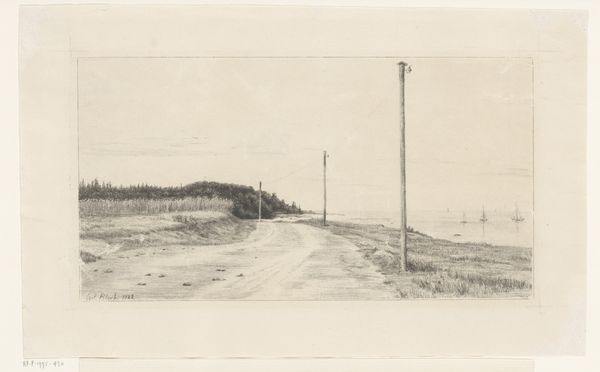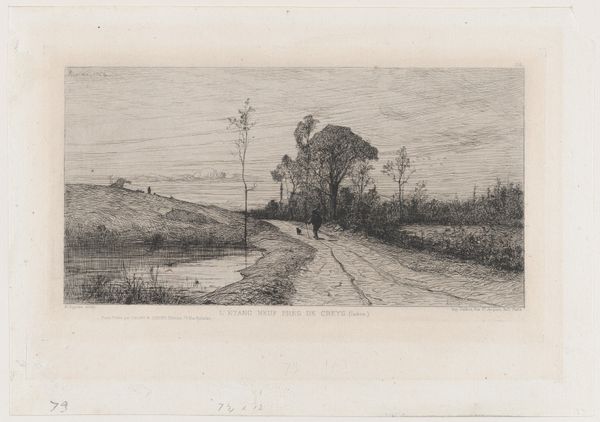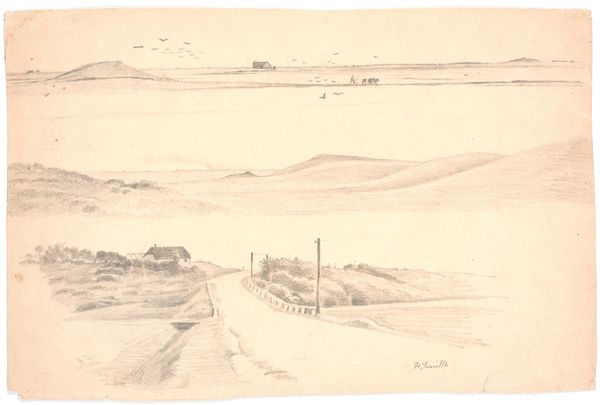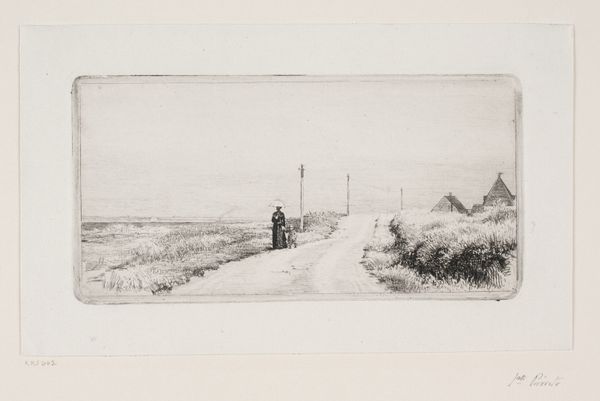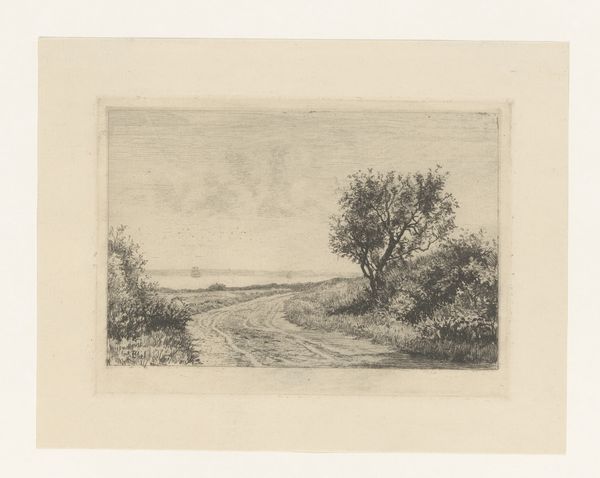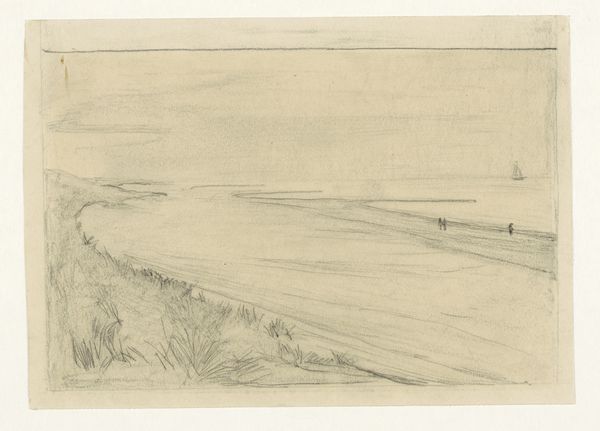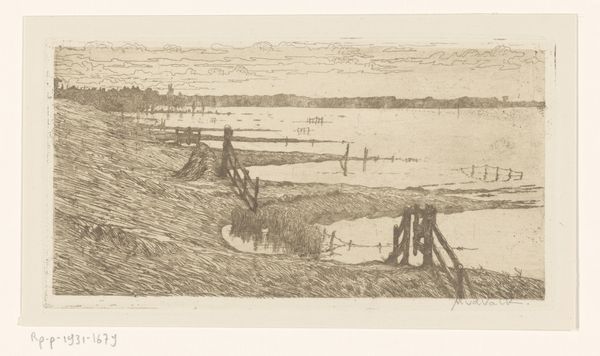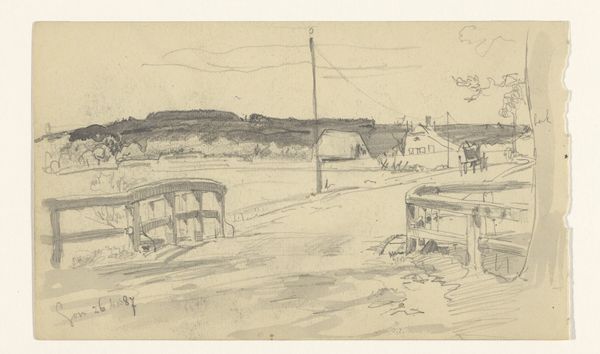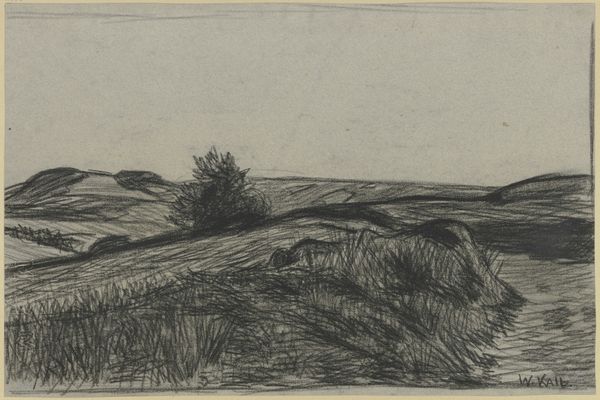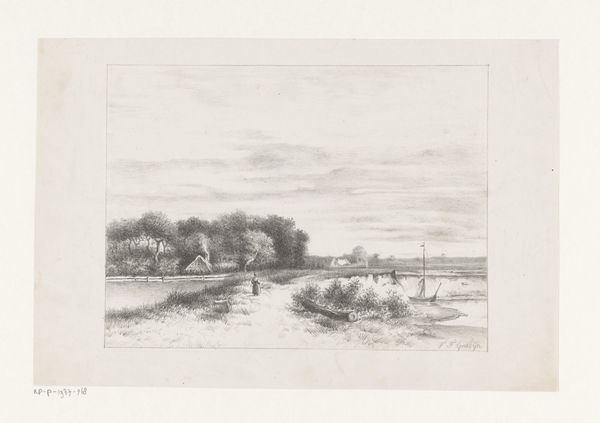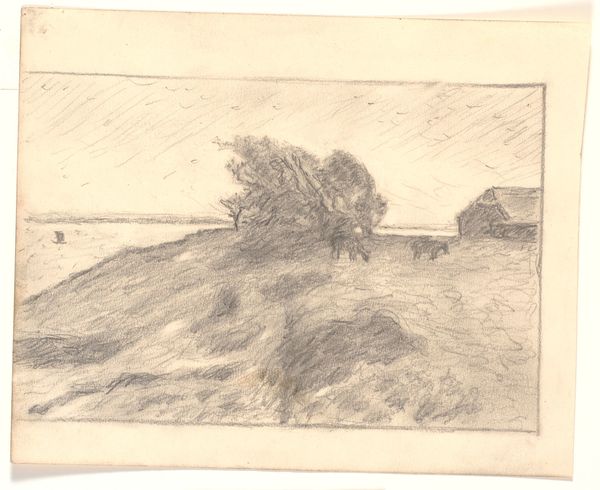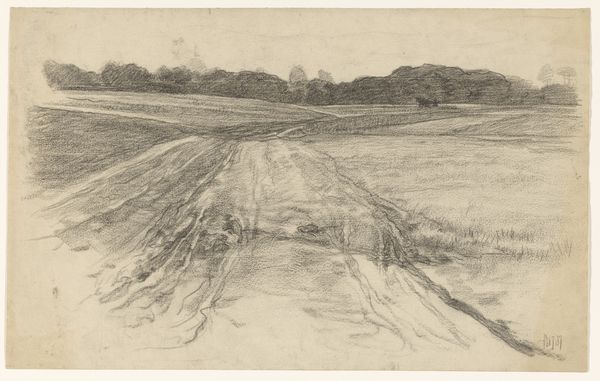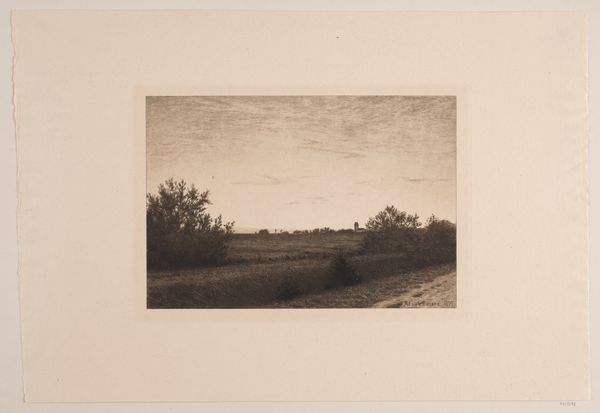
print, etching
# print
#
etching
#
landscape
#
line
#
realism
Dimensions: 135 mm (height) x 240 mm (width) (plademaal)
Curator: Immediately, the sky overwhelms me; it’s bleak, but expansive, making me feel simultaneously lost and full of possibility. Editor: That's interesting. This etching, created in 1882 by Carl Bloch, is entitled "Strandvejen ved Hornbæksplantagen," which translates to "The Coastal Road by Hornbæk Plantation." It’s held at the SMK, the National Gallery of Denmark. Curator: Hornbæk? Is there a narrative around rural escape in Danish art of this era? This landscape speaks of a kind of retreat, almost melancholic, the lines suggesting windswept isolation. Were folks drawn here seeking freedom, a new lease on life? Editor: Certainly, a study of Bloch reveals a painter steeped in the dominant culture of his time; his Danish identity and artistic tradition shaped the way he saw the environment around him. The rise of Romantic Nationalism was a huge thing back then. Think about it. The artist used an etching process—the road, the wooden posts marching alongside, the act of making a plate with deliberate work... these reveal so much about the intersection of labor and the artistic landscape. Curator: I agree, I see labor present but in different forms. Those stark telephone poles against the vast sky make me think of power, both literal electricity, but also the power of modernity pushing into the natural landscape. It’s as though technology is imposing a grid onto the horizon. Was there anxiety or a pushback against technology shaping daily life at this time? Editor: Industrial development undoubtedly had a profound effect. And Bloch as the producer must have also thought of it while creating this work. Considering this artwork as both a landscape and the result of artistic labor raises significant points concerning cultural change and the intersection of the economic and aesthetic spheres. Curator: Perhaps. The path guides us to an ocean populated with the outlines of what may be a fishing ship or merchant vessels… all of these things contribute to a reading of this etching. It is really making me wonder whether this pathway to nature can lead towards cultural awareness of gender, race, and class and who can occupy such place. Editor: An approach that makes perfect sense when looking at Bloch’s 1882 work of “The Coastal Road”. The social-economic context should have a role here. Considering this perspective, Bloch, consciously or unconsciously, has presented here not just one point of view of coastal scenery; but it carries and invites all viewers to see art with a lens from their experience and context. Curator: Thank you. I see what you are talking about. Editor: Indeed!
Comments
No comments
Be the first to comment and join the conversation on the ultimate creative platform.

